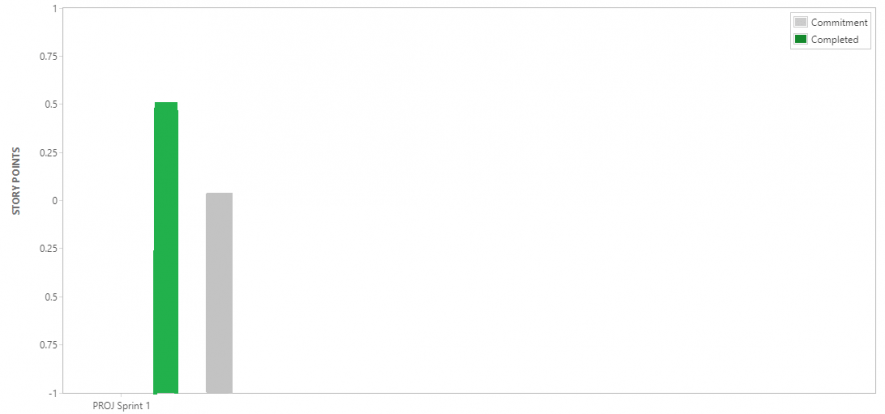Best Practices of Agile Project Reporting by QATestLab Specialists
by Emma Dallas | June 27, 2019 8:00 am
Agile Methodology treats people higher than processes and instruments (according to one of its principles). Self-organized teams, changing requirements, freedom of actions… Is it relevant for reporting at the Agile project? What are its main characteristics and who is responsible for reports? Continue reading to get full and clear information on QATestLab blog.
Agile Project Reporting: requirements and characteristics
The main goal of Agile reports is displaying the project’s status through a clear image. There focus is not on details of a particular account but on the general picture of the affairs. Main advantages of Agile[1] reporting are:

Simplicity. The workflow at such projects is organized in the form of succeeding iterations, and it is very important for each team member to have the option of joining any stage within the shortest time possible. To understand the project’s current run and the specifics that influence the work performance, reports contain only necessary information. It should be clear even for people who do not dive deep into the project.
Transparency. This feature presupposes that each member of the team has access to the report files and can define the progress at a project, view its problems, and offer possible solutions. Sometimes it is rather difficult for project managers to expose problems, as they got used to handling such issues on their own and not to let the team members into them. The advantage of report transparency is that problems have more chances to be solved if team members hold the responsibility for them.
Visibility stand for the clear performance of the reported data. Tables, charts, diagrams, user stories are used for maximum visualization and accessibility. They can be prepared on a weekly basis, which is typical for Scrum project[2] management.
Types of Agile reports with examples
Self-organized Agile teams usually have a leader who is responsible for organization issues as well as reporting. Their responsibilities stay the same, though job titles may differ: project manager, team lead, team coordinator, etc. Here what QATestLab specialist Roman says about reporting within Agile team:
“When a QA team[3] is included in the project on a short-time basis, we do not bother much about regular reporting – there isn’t time for that. There is a general report at the end of the performed work, and it is the responsibility of a team lead.”
The situation differs if we speak about long-term projects and a single team:
“I have worked on a full-time basis at the Agile project. We had daily meetings during which we discussed the performed tasks and difficulties we faced. At the end of each iteration (sprint), team lead prepared the progress report according to one of the metrics typical for Agile reporting,” – shares Roman.
Reporting in JIRA, for example, is clear and easy due to the templates available for Scrum and Kanban methods of project management.

Burndown Chart. Helps to track the amount of work to be done and foretell if the goals set for the sprint will be achieved.

Burnup Chart. Controls the total work scope without considering the accomplished tasks. It assists in the evaluation and control of the full range of tasks [4]at the project.

Sprint Report. Analyzes the scope of work accomplished within a sprint and the number of issues returned to the backlog. You can see if a team handles the assigned tasks or fails to keep up with them.
Velocity Chart. Controls the scope of work performed from sprint to sprint.

Cumulative Flow Diagram. This type of reporting shows the progress of each issue over time. It helps to control the task performance and investigate the bottlenecks that were revealed in the process of their accomplishment.

Version Report. Helps to control the release of product’s each version. You can monitor the version’s readiness and forecast if it will be launched in time.
Epic Report. Watch the progress through finishing an epic (short period). In such a way, you’ll be able to see the current progress on the issue completion and help in accomplishing difficult tasks[5].

Control Chart. Shows the time cycle for each sprint, product, or its version. Having this chart allows you to analyze if the applied strategy can be used for another project.
User Story. It is a way to describe a problem in simple words, from the user’s perspective. It is an individual type of reporting widely used at the Agile projects.

Conclusion on Agile Reporting
Reporting at the Agile projects is based on the principles of maximum visualization, simplicity, and transparency. Unnecessary details are often omitted, and the main focus is made on the development of clear reports. Modern tools offer different kinds of reports’ management and types of performance. Basing on tips and experience of QATestLab specialists, you are free to choose the ones that suit the needs of your team and project.
Learn more from QATestLab
Related Posts:
- advantages of Agile: https://blog.qatestlab.com/2017/10/13/agile-projects-testing/
- Scrum project: https://qatestlab.com/approach/methodologies/
- QA team: https://blog.qatestlab.com/2019/05/07/building-qa-team/
- full range of tasks : https://qatestlab.com/services/
- difficult tasks: https://blog.qatestlab.com/2015/12/24/software-testing-difficult/
- Agile Testing Top 10 Practices: How to Improve Release Management?: https://blog.qatestlab.com/2020/06/04/agile-testing-practices/
- Top 10 Common Errors In Software Testing: https://blog.qatestlab.com/2019/06/04/software-testing-errors/
- Self-organized Agile Teams are Real or No?: https://blog.qatestlab.com/2019/05/21/self-organized-agile-teams/
Source URL: https://blog.qatestlab.com/2019/06/27/agile-project-reporting/

